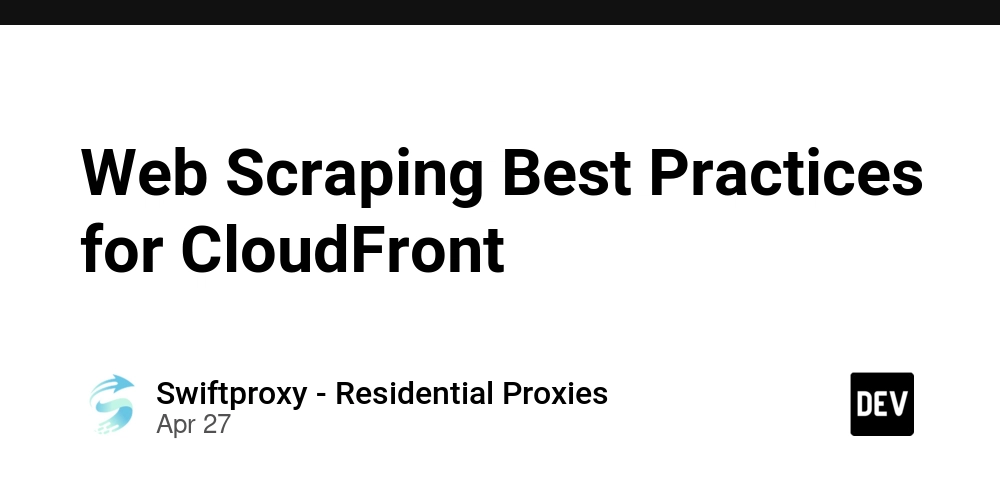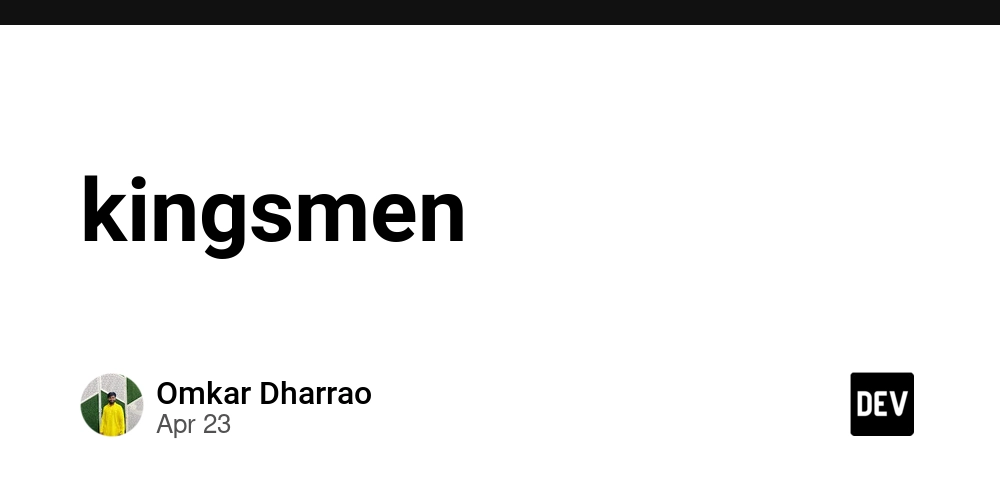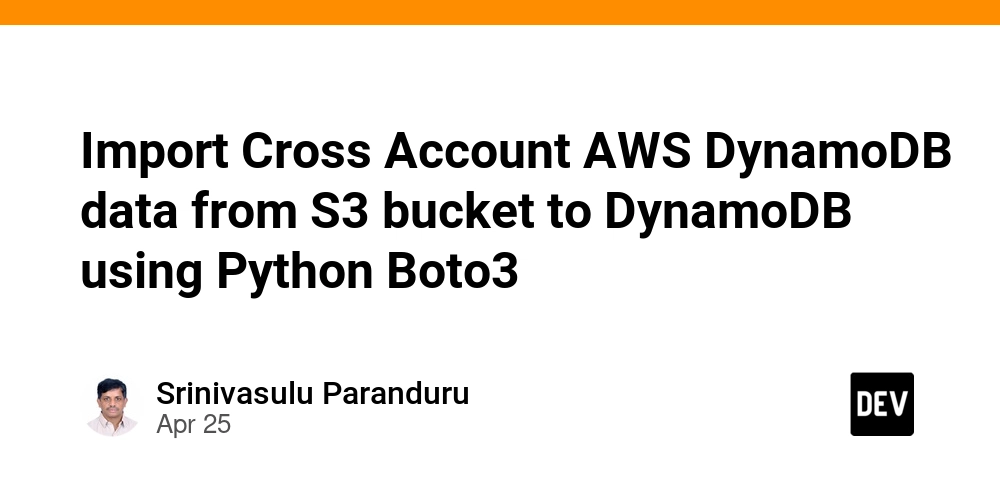Web Scraping Best Practices for CloudFront
CloudFront—Amazon’s powerhouse content delivery network (CDN)—is a game changer for anyone looking to optimize data delivery. But when paired with web scraping? The potential is huge. Whether you’re gathering competitive insights, curating content, or diving into research, CloudFront offers the infrastructure to make data extraction faster and more efficient. But with great power comes great responsibility—let’s explore how to make the most of this combo without crossing ethical lines. CloudFront: The Backbone of the Web CloudFront, part of Amazon Web Services (AWS), is a top-tier CDN designed to deliver content quickly and reliably, no matter where the user is located. Imagine having servers around the globe ready to serve your content—no matter how far away your audience is. That’s CloudFront at work. This CDN stores copies of your website’s content across a network of edge locations worldwide. When a user requests a page, CloudFront directs them to the nearest edge location, cutting down on load times and boosting performance. Key Features of CloudFront Global Reach: Servers in diverse locations reduce latency and ensure fast content delivery. Tight AWS Integration: Seamlessly integrates with AWS services like Amazon S3, EC2, and Route 53. Security at its Core: From HTTPS support to AWS Shield for DDoS protection, CloudFront doesn’t compromise on security. Customizable Delivery: Developers can tailor content delivery to meet specific needs. Cost-Effective: With a pay-as-you-go model, you only pay for the data transferred—no upfront costs. Dynamic and Static Content: Supports both types of content, making it a flexible solution for a wide range of applications. Real-Time Metrics: Track delivery stats with detailed metrics and logs. Understanding Web Scraping Web scraping automates the process of gathering data from websites. Rather than manually copy-pasting, web scraping sends requests to websites, retrieves HTML data, and extracts valuable info—quickly and at scale. The typical web scraping process goes like this: Send a Request: The scraper sends an HTTP request to the target website. Get the Response: The website responds with HTML content. Parse the HTML: The scraper processes the HTML to identify data. Extract and Store the Data: The valuable data is saved in a structured format (like CSV or JSON). Industries Powered by Web Scraping From e-commerce to research, web scraping fuels a range of industries: E-commerce: Scraping competitor prices and product offerings. Real Estate: Gathering property data, prices, and trends. Recruitment: Analyzing job market trends through job portal scraping. Finance: Tracking stock prices and financial data. News & Media: Curating content from diverse sources. Travel: Comparing airline and hotel prices. Effective Tools and Techniques for Web Scraping When it comes to scraping, there’s no shortage of tools. Let’s break down the essentials. Headless Browsers Headless browsers are essential when scraping websites with dynamic content. Here’s why: Dynamic Content Loading: Websites powered by JavaScript often load content after the initial HTML is delivered. Traditional scraping tools miss this. Mimicking Real Users: Headless browsers simulate actions like scrolling, clicking, or filling out forms, allowing you to scrape content hidden behind user interactions. Rendering Web Pages: They can render complex web pages built with frameworks like React or Angular, ensuring the scraper sees the page just like a human user would. Handling Cookies and Sessions: These browsers manage cookies and sessions, making it easier to scrape authenticated content. Python & BeautifulSoup Python, paired with libraries like BeautifulSoup, makes web scraping efficient and powerful. Simple and Intuitive: BeautifulSoup parses HTML and XML content, letting you search and navigate through the data easily. Tag Manipulation: Extract specific tags and attributes with ease. Encoding Flexibility: It automatically handles document encoding, making scraping a breeze. Proxies When scraping large amounts of data, proxies are a game changer. Here’s why: Anonymity: Proxies help avoid detection by masking your IP address. Geo-Targeting: Scrape content that’s region-specific, without running into access restrictions. Avoiding Rate Limits: Rotate through multiple proxies to bypass request limits. Parallel Scraping: Use multiple proxies to speed up the scraping process. Reasons to Consider Scraping CloudFront There are plenty of reasons to scrape websites powered by CloudFront: Competitive Analysis: Get insights into competitor content and strategies. Content Aggregation: Aggregate content for comparison sites or news aggregators. Research & Academic Projects: Gather data for studies or papers. SEO Analysis: Scrape for SEO insights, s

CloudFront—Amazon’s powerhouse content delivery network (CDN)—is a game changer for anyone looking to optimize data delivery. But when paired with web scraping? The potential is huge. Whether you’re gathering competitive insights, curating content, or diving into research, CloudFront offers the infrastructure to make data extraction faster and more efficient. But with great power comes great responsibility—let’s explore how to make the most of this combo without crossing ethical lines.
CloudFront: The Backbone of the Web
CloudFront, part of Amazon Web Services (AWS), is a top-tier CDN designed to deliver content quickly and reliably, no matter where the user is located. Imagine having servers around the globe ready to serve your content—no matter how far away your audience is. That’s CloudFront at work.
This CDN stores copies of your website’s content across a network of edge locations worldwide. When a user requests a page, CloudFront directs them to the nearest edge location, cutting down on load times and boosting performance.
Key Features of CloudFront
- Global Reach: Servers in diverse locations reduce latency and ensure fast content delivery.
- Tight AWS Integration: Seamlessly integrates with AWS services like Amazon S3, EC2, and Route 53.
- Security at its Core: From HTTPS support to AWS Shield for DDoS protection, CloudFront doesn’t compromise on security.
- Customizable Delivery: Developers can tailor content delivery to meet specific needs.
- Cost-Effective: With a pay-as-you-go model, you only pay for the data transferred—no upfront costs.
- Dynamic and Static Content: Supports both types of content, making it a flexible solution for a wide range of applications.
- Real-Time Metrics: Track delivery stats with detailed metrics and logs.
Understanding Web Scraping
Web scraping automates the process of gathering data from websites. Rather than manually copy-pasting, web scraping sends requests to websites, retrieves HTML data, and extracts valuable info—quickly and at scale.
The typical web scraping process goes like this:
Send a Request: The scraper sends an HTTP request to the target website.
Get the Response: The website responds with HTML content.
Parse the HTML: The scraper processes the HTML to identify data.
Extract and Store the Data: The valuable data is saved in a structured format (like CSV or JSON).
Industries Powered by Web Scraping
From e-commerce to research, web scraping fuels a range of industries:
- E-commerce: Scraping competitor prices and product offerings.
- Real Estate: Gathering property data, prices, and trends.
- Recruitment: Analyzing job market trends through job portal scraping.
- Finance: Tracking stock prices and financial data.
- News & Media: Curating content from diverse sources.
- Travel: Comparing airline and hotel prices.
Effective Tools and Techniques for Web Scraping
When it comes to scraping, there’s no shortage of tools. Let’s break down the essentials.
Headless Browsers
Headless browsers are essential when scraping websites with dynamic content. Here’s why:
- Dynamic Content Loading: Websites powered by JavaScript often load content after the initial HTML is delivered. Traditional scraping tools miss this.
- Mimicking Real Users: Headless browsers simulate actions like scrolling, clicking, or filling out forms, allowing you to scrape content hidden behind user interactions.
- Rendering Web Pages: They can render complex web pages built with frameworks like React or Angular, ensuring the scraper sees the page just like a human user would.
- Handling Cookies and Sessions: These browsers manage cookies and sessions, making it easier to scrape authenticated content.
Python & BeautifulSoup
Python, paired with libraries like BeautifulSoup, makes web scraping efficient and powerful.
- Simple and Intuitive: BeautifulSoup parses HTML and XML content, letting you search and navigate through the data easily.
- Tag Manipulation: Extract specific tags and attributes with ease.
- Encoding Flexibility: It automatically handles document encoding, making scraping a breeze.
Proxies
When scraping large amounts of data, proxies are a game changer. Here’s why:
- Anonymity: Proxies help avoid detection by masking your IP address.
- Geo-Targeting: Scrape content that’s region-specific, without running into access restrictions.
- Avoiding Rate Limits: Rotate through multiple proxies to bypass request limits.
- Parallel Scraping: Use multiple proxies to speed up the scraping process.
Reasons to Consider Scraping CloudFront
There are plenty of reasons to scrape websites powered by CloudFront:
- Competitive Analysis: Get insights into competitor content and strategies.
- Content Aggregation: Aggregate content for comparison sites or news aggregators.
- Research & Academic Projects: Gather data for studies or papers.
- SEO Analysis: Scrape for SEO insights, such as on-page strategies and backlinks.
- Content Monitoring: Track specific mentions or updates across the web.
How to Scrape CloudFront
Scraping CloudFront isn’t complicated—if you follow the right steps:
Identify the Target URL: Pinpoint the exact CloudFront URL you want to scrape.
Inspect the Web Page: Use developer tools to check the page structure and locate the data.
Write the Scraping Script: Use Python to write a script that fetches and parses the data.
Handle Pagination: If the data spans multiple pages, ensure your script navigates to and scrapes all pages.
Store the Data: Save the data in a structured format (CSV, JSON, or database).
Respect robots.txt: Always check the site's robots.txt file to stay compliant.
Navigating the Legal Landscape
Web scraping isn’t a free-for-all—it’s crucial to understand the legal implications:
- Terms of Service (ToS): Always review the ToS before scraping.
- Copyright Laws: Just because data is accessible doesn’t mean it’s free to use. Stay mindful of copyright protection.
- Data Protection Regulations: Adhere to regulations like GDPR and CCPA, especially when dealing with personal data.
- Computer Fraud and Abuse Act (CFAA): Avoid unauthorized access to systems to stay on the right side of the law.
Ethical Scraping Practices
As we dive deeper into scraping, remember: ethics matter.
- Rate Limiting: Don’t overwhelm CloudFront by bombarding it with requests.
- Sensitive Information: Respect privacy—avoid scraping personal data.
- Source Acknowledgment: Always credit the original source if you’re using the data for research or publication.
- Seek Permission: If you’re unsure about scraping a site, get permission.
Bypassing Anti-Scraping Measures
Many platforms, including CloudFront, implement anti-scraping tools to prevent bots:
- User-Agent Rotation: CloudFront may block scrapers based on their user-agent. Rotate them to mimic legitimate users.
- CAPTCHAs: These can block scraping attempts. While solutions exist, avoid overusing them to prevent bans.
- IP Bans: Use proxies to rotate IP addresses and avoid detection.
- Honeypots: Be wary of fake data designed to trap scrapers.
Wrapping Up
When CloudFront, web scraping, and proxies come together, the result is a potent combination for fast, efficient, and responsible data extraction. But as we tap into this power, ethical scraping practices must be at the forefront. Respect digital boundaries, adhere to legal guidelines, and always prioritize privacy. The digital world is evolving, and as long as we stay informed and act responsibly, the possibilities are endless.
































































































































































![[The AI Show Episode 143]: ChatGPT Revenue Surge, New AGI Timelines, Amazon’s AI Agent, Claude for Education, Model Context Protocol & LLMs Pass the Turing Test](https://www.marketingaiinstitute.com/hubfs/ep%20143%20cover.png)





























































































































![[DEALS] Koofr Cloud Storage: Lifetime Subscription (1TB) (80% off) & Other Deals Up To 98% Off – Offers End Soon!](https://www.javacodegeeks.com/wp-content/uploads/2012/12/jcg-logo.jpg)

























![Is this too much for a modular monolith system? [closed]](https://i.sstatic.net/pYL1nsfg.png)




















































































































_roibu_Alamy.jpg?width=1280&auto=webp&quality=80&disable=upscale#)




 CISO’s Core Focus.webp?#)








































































































![M4 MacBook Air Drops to Just $849 - Act Fast! [Lowest Price Ever]](https://www.iclarified.com/images/news/97140/97140/97140-640.jpg)
![Apple Smart Glasses Not Close to Being Ready as Meta Targets 2025 [Gurman]](https://www.iclarified.com/images/news/97139/97139/97139-640.jpg)
![iPadOS 19 May Introduce Menu Bar, iOS 19 to Support External Displays [Rumor]](https://www.iclarified.com/images/news/97137/97137/97137-640.jpg)





































































































